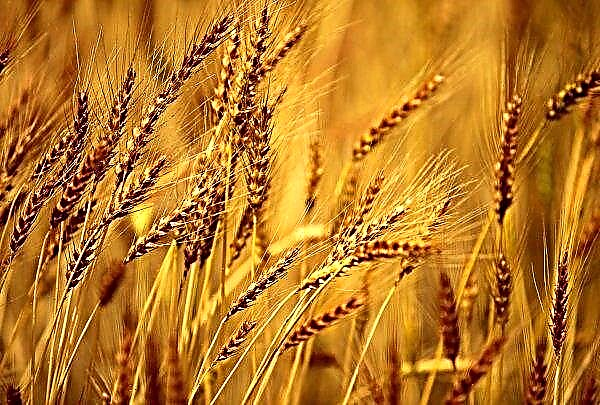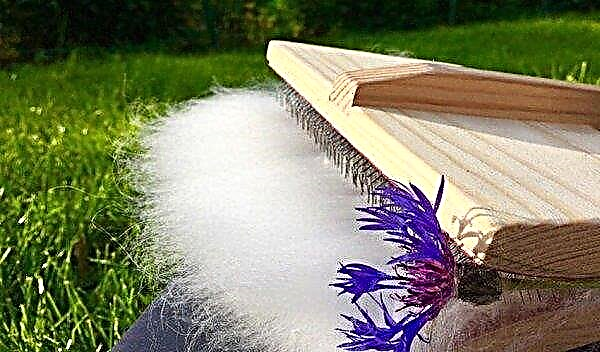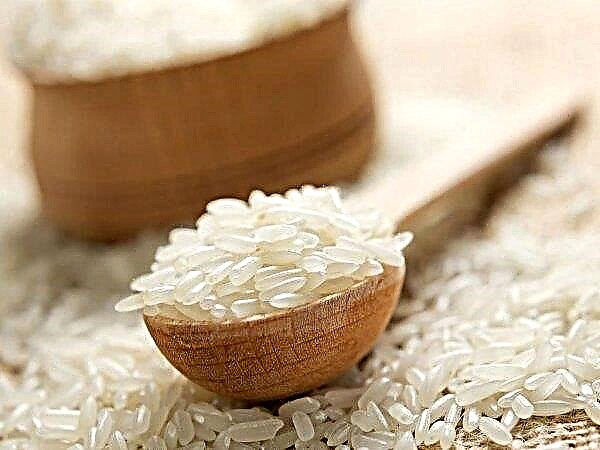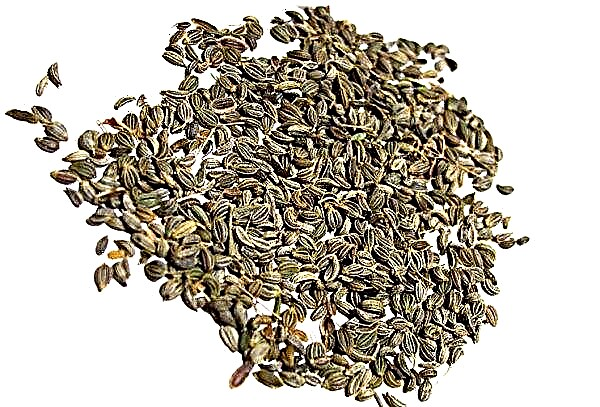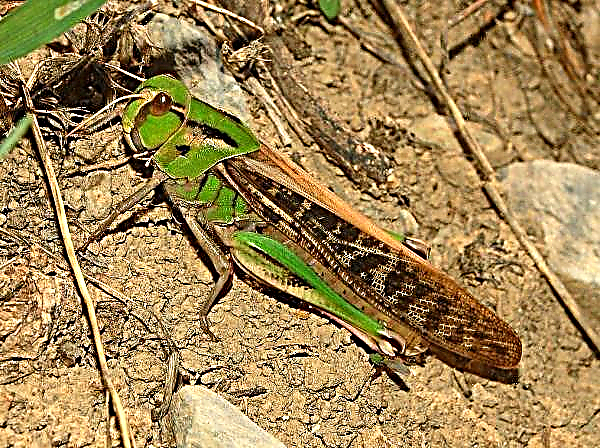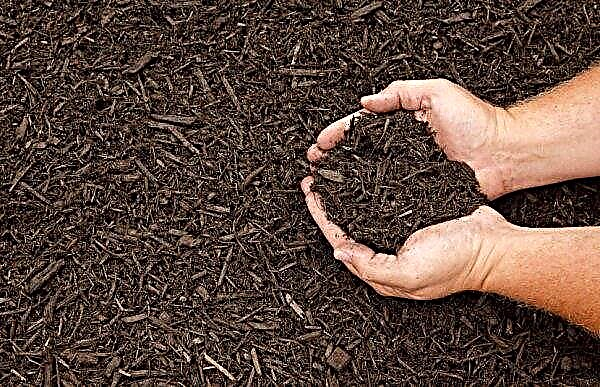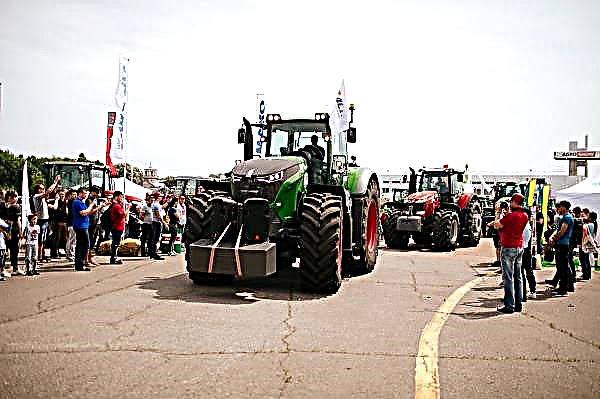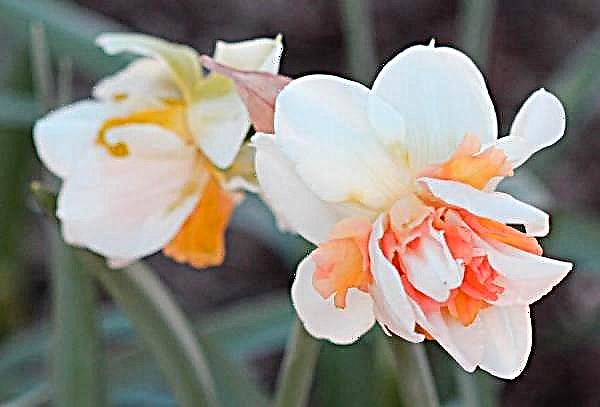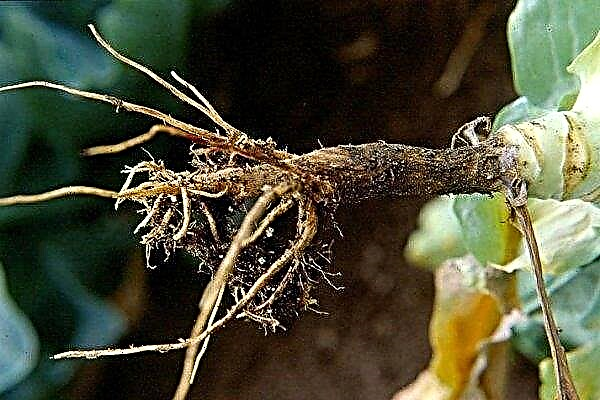Rinda cabbage is known in the circles of commercial producers and in private gardening. Suitable for cultivation in different climatic zones, easy to care. Next, we consider the positive and negative qualities of the hybrid, as well as the features of its cultivation.
Description and characteristics of the variety
Rinda f1 white cabbage is a hybrid of medium maturity (about 100 days pass from seedlings to technical ripeness). It is used for fresh consumption, for preservation and salting, cooking first and second courses, stuffed cabbage, filling for pies, stewing. Able to be stored for a long time.
Variety Breeding
Rinda is a hybrid of Dutch breeding. Since 1993, it has been in the register of the Russian Federation for the Central and Volga-Vyatka region.
Description of the fetus
Heads of regular spherical shape, dense, reach an average weight of 3–6 kg, the cob is small, has a white-yellow color at the cut. The leaves are light green thin and juicy, but elastic.
Advantages and disadvantages of the variety
- The sympathy of farmers has won a large number of advantages:
- simultaneous ripening of heads of cabbage;
- resistance to diseases and pests;
- high productivity;
- unpretentiousness to soil;
- good transport tolerance and long-term storage;
- resistance to temperature extremes;
- marketable condition;
- does not crack when overripe;
- taste qualities.
- Among the shortcomings can be noted:
- instability to drought;
- photophilousness.
Growing Features
You can grow in different climatic zones, but given the love of the sun and the instability for drought, you need to choose the right place for planting. It is necessary to exclude low places so that there is no accumulation of excess moisture, but also to avoid hills (so as not to be too dry).
Important! The place should be open and well ventilated, without too much shadow, otherwise the yield will decrease.
Optimal time for sowing seeds
Seeds can be sown immediately in the ground or seedlings can be grown. A favorable temperature for landing in open space is considered to be +15 ... + 17 ° C, that is, from the end of April - at the beginning of May. If you plan to grow seedlings, then sowing is carried out in late March - early April.
Seedling method is preferred, as it will allow you to get the crop earlier. Sowing directly into the soil is only suitable for mild, warm climates.

Seed preparation
If the seeds have already been processed (as indicated on the packaging), no additional processing is required, and they are ready for planting. Otherwise, it is recommended that you first check for germination in salt water (1 tsp. For 1 glass of water). Seeds leave for 15-20 minutes. Those that emerge during this time are unsuitable. The rest should be warmed up in warm water (+ 50 ° C). After half an hour immerse in cold water for 5 minutes. In addition, you can soak in a humate solution or other growth stimulants. After all the procedures, the seeds need to be dried.
Preparation of soil for seedlings
You can prepare for seedlings a mixture consisting of earth and humus in a ratio of 1: 1 and wood ash 1 tbsp. per 1 kg of the mixture, or you can buy ready-made soil. At the same time, the land is prepared in the fall: they dig and fertilize.
Sowing seeds
Planting material is sown in any suitable container to a depth of 1.5–2 cm, covered with soil and watered abundantly.  If you plan to perform a pick, it is better to take a larger crate and place the seeds at a distance of 2 cm from each other. If there is no picking, then you need to take cups of at least 10 cm high and plant 2-3 seeds in them. After germination, the strongest plant is left.
If you plan to perform a pick, it is better to take a larger crate and place the seeds at a distance of 2 cm from each other. If there is no picking, then you need to take cups of at least 10 cm high and plant 2-3 seeds in them. After germination, the strongest plant is left.
Crop conditions and care
The ambient temperature immediately after planting should be in the range of +20 ... + 22 ° C. When the seeds germinate, the temperature should be reduced to +8 ... + 10 ° C. Seedlings are left in a well-lit place. Watering should be performed as the soil dries. After a couple of weeks, you can dive.
Seedling hardening
Landing in the ground requires hardening seedlings. You need to start in 2 weeks. To do this, leave it in the open air first 2 hours, then gradually increase this interval. Before planting, the seedlings should be in the air all day.

Transplanting seedlings into the ground
For planting, beds are prepared that are lit by the sun throughout the day. The soil should be dug in the fall, so in the spring it is only leveled with a rake. According to the crop rotation rules, other cruciferous plants (Rinda is also not supposed to grow) in this area: radish, turnip, radish and other cabbage. The optimum level of soil pH is 6.5–7.5. If the soil is too acidic, you can reduce its acidity by adding dolomite flour, lime or chalk.
In this case, the bushes should be placed in the holes at a distance of 70 cm from each other (square-nested arrangement).Important! Planting seedlings occurs at 35–40 days after planting, provided that the plants have 6–8 sheets. Before planting, seedlings are abundantly watered.
If the seedless method is used, it is necessary:
- After rejecting the seeds in saline, sanitize them in a potassium permanganate solution (1 g per half a glass of water).
- Between the rows leave a distance of 8-10 cm, and spread the seeds 2-3 cm from each other.
- Spread 5-6 seeds in a hole to a depth of 5 cm, then mulch with sawdust or humus.
Plants are able to withstand short-term frosts up to –5 ° С.
Plant care
After planting, the culture requires standard care methods: watering, fertilizing and loosening.
Features of watering
Immediately after landing in the ground, cabbage must be watered 3-4 times a week with 10 liters of water per 1 m². Gradually, the volume is increased to 15 liters, but the frequency of watering is reduced to 2 times a week.

Fertilizer application
Seedlings are fertilized with this solution: 2 g of potassium sulfide and ammonium nitrate and 4 g of superphosphate are taken per 1 liter of water. First, the earth is watered with water, and then fertilizer to avoid burns.
Even during the hardening of seedlings, you can perform top dressing. To do this, take urea (1 tablespoon) and potassium sulfate (2 tablespoons) in a bucket of water (10 l). The solution is insisted for a day, and then use 1 glass per plant.Did you know? The first mention of cabbage was found during archaeological excavations: they date back to the Stone and Bronze Ages.
During planting in the ground, the following fertilizer is added to the wells: 200 grams of wood ash are taken per bucket of water, superphosphate - 2 tbsp. and 1 part urea. 3 liters of solution are consumed per 1 m². Another feeding is done when the sprouts reach 25 cm. For 1 hole, about 0.5 kg of humus or liquid cow manure, and 1 hour of ash and nitrophoska are needed.
Soil loosening
The soil must be loosened not only after watering, but also after rain, so that an earth crust does not form. Loosen to a depth of about 10 cm. In addition, weeds are regularly weeded.

It is also necessary to do 2 times of hilling. The first is done 2 weeks after planting the bushes in the open ground, and then again after 30–40 days. After hilling, a new layer of earth should reach 20–30 cm.
Pest and Disease Control
This cabbage variety is resistant to disease, but improper care can provoke them.
Preventive measures include:
- crop rotation compliance;
- cleaning the site of weeds and plant debris;
- Autumn digging for the death of malicious larvae;
- compliance with watering and loosening;
- soil acidity reduction.
With powdery mildew, the leaves of cabbage are covered with a gray coating, after which they begin to dry out. Do not overmoisten the soil. If detected, can be treated with a solution of Bordeaux liquid (1%).Did you know? It has not yet been established where garden cabbage was grown for the first time. For the right to be called the birthplace of this vegetable, disputes are ongoing between Georgians, Greeks, Italians and Georgians.
Kila is a disease of the root system in which outgrowths form on the roots that interfere with the absorption of nutrients, which causes the plant to die. Upon detection, the bushes are removed and destroyed. An important role is played by crop rotation. Cabbage can be planted in the same area, not earlier than in 3-4 years.

Blackleg. The stem is affected, the plant gradually dies. You can treat the seeds before planting with special preparations, for example, Granozan. After removing infected plants, one should refrain from re-planting in this place.
The main pests are slugs, cruciferous flea, aphids, caterpillars. When the cabbage is transferred to the open ground, the seedlings are pollinated with a mixture of ash and tobacco dust. You can also plant mint, sage and other spicy herbs between the rows, which will deter pests.
Harvesting and storage
Heads of cabbage ripen at the same time, which simplifies the collection of cabbage. Productivity reaches 10 kg with 1 m². Harvested in cool dry weather for better subsequent storage. Cabbage heads are cut with a knife. Cabbage should be stored in cool dark rooms, the best temperature is from 0 to + 13 ° C. Heads can be stacked in bags, boxes. But it’s even better to arrange the cabbages so that they do not touch each other, you can even hang them by tying the stitches with a rope. So that the cabbage does not mold and does not turn yellow, the room needs to be ventilated 2 times a month. The humidity should be 85%. Subject to conditions, can be stored up to 4 months.
But it’s even better to arrange the cabbages so that they do not touch each other, you can even hang them by tying the stitches with a rope. So that the cabbage does not mold and does not turn yellow, the room needs to be ventilated 2 times a month. The humidity should be 85%. Subject to conditions, can be stored up to 4 months.
The Rinda cabbage variety is well characterized from different angles. This is a high-yielding, unpretentious and versatile cabbage. To grow it on your site is not difficult - just have a well-lit garden and regularly water the plant.

